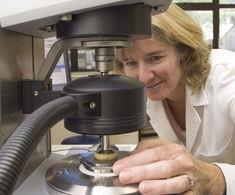
The drive to increase fruit consumption received a major boost this week when multi-million pound EU research programme Isafruit welomced HortResearch New Zealand as a partner.
The NZ body joins University of California, Davis as one of only two non-EU partners.
Isafruit is the biggest fruit research programme of its kind and aims to increase fruit consumption through delivering high-quality produce from sustainable production methods and ultimately to improve health in the European population. It has attracted significant funding including some €13.8 million from the European Commission. HortResearch obtained funding to support its involvement in Isafruit from NZ funding programme Foundation for Research Science & Technology.
HortResearch’s involvement in the four-and-a-half year programme is to provide data on fruit texture, focusing initially on top-fruit. “Crispness, hardness and juiciness are all key aspects in the overall consumer experience of fruit,” said Hort Research’s business leader for Europe, Jill Stanley. “When these and other attributes are present in the right balance then eating fruit is a real pleasure. We want to understand the physiology behind these attributes so we can pass that information on to breeders, enabling them to target fruits that will be popular with consumers.”
Researchers in NZ are already beginning work on the project by developing instrument tests to assess fruit texture accurately. “If we wantto breed fruit with these characteristics, then we must first be able to measure them,” said Stanley. “People can tell you if fruit is juicy, firm or soft, but they cannot do so consistently when large numbers of samples need to be assessed so we need to develop instruments that can. We will be starting with top fruit but the plan is to extend that to other lines such as stone fruit or melons. Our focus at HortResearch is all fruit as is Isafruit’s. “
Stanley pointed out that the aim is not to develop new varieties. “In terms of the project, realistically we won’t get any new cultivars in four-and-a-half years, but we are looking at assessment of new selections that are already in existence and finding the qualities that will make people want to eat them.”
Once measurement techniques are available, HortResearch will be able to investigate fruit to determine the molecular structures that convey key attributes. “We’ll be looking to tell breeders what they should be looking for at the molecular level, helping them to select the best plants for their breeding programmes,” explained Stanley.
Isafruit was launched in February in Denmark and unites 64 research partners in 14 EU countries as well as the NZ and US members.
The programme has already identified bottlenecks in the supply chain which reduce consumption and aims to resolve these through consumer-driven preferences. “These bottlenecks include insufficient quality and safety of fruit and fruit products at the point of consumption,” said Ole Callesen, programme co-ordinator. “Low levels of convenience compared to competing products such as snacks and soft drinks, a limited availability of certain lines, a lack of awareness on the health-giving attributes of fruit and high prices of some lines at point of sale.”
Isafruit hopes to boost quality and safety while improving convenience and availability, and raising consumer awareness and affordability. The programme runs for 54 months from February 2006.



